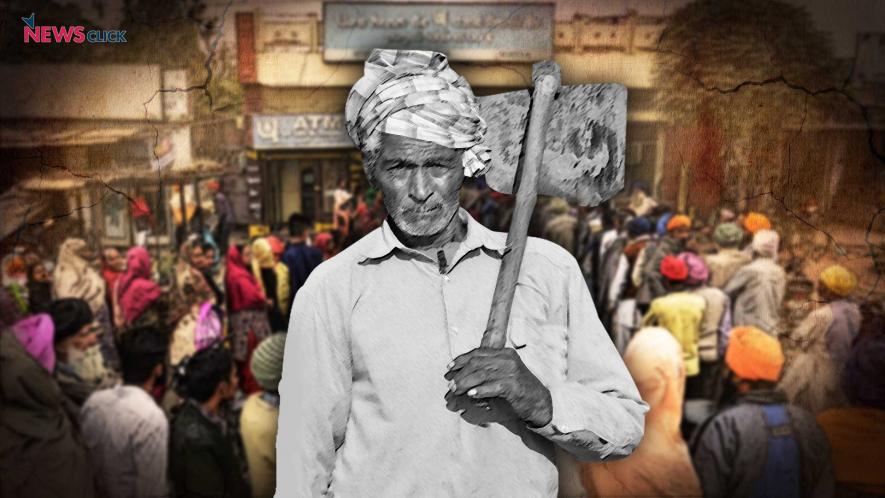A Comprehensive Guide From RBI on How 'Not' to Lend to Farmers

If you ever find yourself with time on your hands, and don’t know what to do with it – here is something that you can do. Just go to the website of Reserve Bank of India, and search for a document called ‘Master Circular on Priority Sector Lending”.
Yes, the title sounds somewhat boring. But, trust me, it makes for an interesting read. Of course, a more apt title would not have been amiss, something on the lines of “How to Deny Credit to Farmers, While Continuing to Claim the Opposite”, but the RBI is not really known for their good titles.
But before we go on, let's talk a little bit about Priority Sector credit.
What is priority sector credit?
To answer this question, we need to go back a few decades in India’s economic history - to the period of bank nationalisation, between 1969 and 1980, when the government nationalised many of the private sector banks, thereby bringing 85% of the banking sector under public control.
Prior to the nationalisation, all most all banks were located in a few urban centres and served the credit needs of a handful of large business groups. Rest of the economy consisting of agriculture, rural industry, small-scale industry and others, was more or less forced to depend on money lenders for credit. For example, on the eve of nationalisation, only 0.2% of total bank credit was going in the agriculture. This was one of the main reasons behind the decision to nationalise banks.
After the nationalisation, to ensure that banks would provide credit for agriculture, small-scale industry, rural poor and people from marginalised and weaker sections – the banks were ordered to give at least 40% of their credit to these sections. This target of 40% is what today called ‘the priority sector credit’.
Within the target of the priority sector credit, banks were also given a minimum target of credit to agriculture at 18% of the total bank credit. Because of this target, credit to agriculture has increased substantially, from 0.2% in 1960 to 18% in 1991.
The 18% of banking credit was still not enough to cover the needs of the Indian farmers completely, with surveys on farmer indebtedness indicating that majority of the credit to farmers was provided by money lender and other non-institutional sources. Yet, it was still a great improvement from the period before the bank nationalisation.
Now that we have had a look at the background of the priority sector credit and agricultural credit, let us get back to our ‘circular’
What are the many ways that banks can deny credit to agriculture?
The present Master Circular on Priority Sector Lending by the RBI is a compendium of all the instructions that it has been giving to the banks, for the past two and half decades. The main aim of most of these instructions was to cut down the credit to the priority sector, particularly the credit to farmers (agricultural credit) - for this was one of the main agendas of the neo-liberal reforms of the successive governments since 1991.
How do these RBI instructions help in reducing credit to agriculture?
To begin with, since it will look openly cruel to cut down the agricultural credit from 18% to, let us say, 13.5% - RBI cleverly redefined the meaning of agricultural credit. It introduced something called ‘indirect agricultural credit’.
Till then, agricultural credit had to be directly given to the farmers. But with the introduction of the new category, RBI allowed banks to cut down their direct credit to farmers to just 13.5%. Rest of the 4.5%, now redefined as the indirect credit to agriculture, the bank could lend to big corporates for the purpose of corporate farming, to set up chains of cold storages and warehouses, agro-processing business units and even to biotechnology firms. Any lending to such entities up to Rs. 100 crore would be considered agricultural credit. With this new definition, among others, companies can take credit for setting up cold storages and warehouses for their supermarkets in metropolitan cities, and banks can claim all of this under the agricultural credit.
Soon the RBI felt that farmers can do with even less credit and that 13.5% is a bit too much. So, last year, it decided to wipe out the distinction between direct and indirect credit. Today, out of the 18% agricultural credit, banks are given a target of 8% credit to small and marginal farmers – and it is up to them how they disburse the remaining 10%. Which means that now, banks can to divert more than half of the total agricultural credit to the non-agricultural purposes mentioned above.
Even this 8% credit meant for small and marginal farmers is further diluted by the RBI. Bank loans to Microfinance firms, that in turn lend to farmers, are allowed to be considered agricultural credit, by the RBI. So, now banks can simply lend to microfinance firms, and still meet their agricultural credit target.
It is a well known fact that the so-called micro-finance institutions tend to be as exploitative as the old-fashioned village money lenders - charging very high rate of interests. In fact, the RBI specifies that banks can give agricultural credit to the Microfinance firms, as long as these firms charge their customers an interest rate not exceeding the Bank Base Rate plus 12%, which roughly amounts to 21% per annum interest rate, at the moment.
What is an interest rate of 21% per annum, if not usurious? How many farmers can take a loan with an interest rate as high as this and not get into a permanent state of debt?
As if all this wasn't enough, the RBI has found a few more innovative ways of cutting bank credit to the agricultural sector. It has allowed banks, that do not meet the 18% agricultural credit target, to buy agricultural loan securities from other banks, financial institutions and non-banking financial companies. For example, private sector banks, which have very little presence in rural areas, can buy a securitised agricultural loan from a regional rural bank and can claim this as their own agricultural credit. Without ever having a single farmer as their customer and without ever having a single branch in the rural areas – just by buying few asset-backed securities, banks can meet their agricultural credit targets.
On a similar line, banks can also buy Inter Bank Participatory Certificates (IBFCs) to meet their agricultural credit targets. It is very well known that before March 31st every year, the time when RBI assesses the agricultural sector targets, many private banks scramble to buy agricultural IBFCs from public sector banks, holding them for a short while until the month passes. The IBFCs can be shown as loans to farmers on the books of these banks, without actually giving the credit.
Recently, RBI has also introduced something called a ‘priority sector lending certificate (PSLC)’, to make it even easier for banks to divert funds away from agriculture. The RBI has, actually, started a portal where banks can trade in PSLCs. The banks that buy the PSLC, simply pay a small fee to the selling bank for ‘transferring their agricultural credit achievement’. The actual loan and the risk associated with a loan is not transferred. The buying bank does not even pay the face value of the loan; it will only a pay a small fee. Any banks that fall short of its agricultural credit quota, can simply go on to the portal and buy some agricultural PSLCs - which is much more convenient than actually going to a village and lending to a farmer.
This is not an exhaustive list of all the clever schemes that the RBI has been coming up with to dilute the agricultural credit, but it is enough to understand that most of the credit which the banks claim to have given to farmers, has not really reached them. The result of this is the increasing dependence of farmers on high-cost informal borrowing. The recent spate of protests by distressed farmers across various states is an evidence of this.
Get the latest reports & analysis with people's perspective on Protests, movements & deep analytical videos, discussions of the current affairs in your Telegram app. Subscribe to NewsClick's Telegram channel & get Real-Time updates on stories, as they get published on our website.























